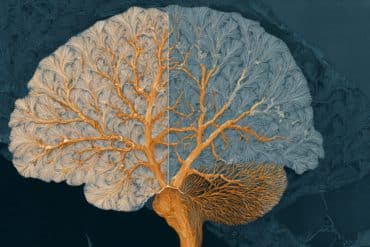Summary: A new study shows that brain activity in small groups can predict large-scale decision-making. Using fMRI, researchers found that activity in the Nucleus Accumbens (NAcc) during initial affective responses consistently aligned with choices made by thousands of online participants.
While individual decisions varied, the early brain responses were broadly shared, making them useful for “neuroforecasting” real-world behavior. These findings suggest that neural data from small groups may help predict consumer trends, public opinion, and collective decision-making.
Key Facts
- Neuroforecasting Potential: Brain activity from small fMRI groups predicted real-world choices of thousands.
- Key Brain Region: Nucleus Accumbens activity correlated strongly with aggregate decision-making.
- Broad Application: Early affective responses were more generalizable than final individual choices.
Source: PNAS Nexus
Neuroimaging can capture brain activity in response to stimuli before a person decides how to respond. Initial affective responses—broadly good or bad feelings about a stimulus—have been associated with activity in evolutionarily conserved subcortical and cortical circuits including the Nucleus Accumbens (NAcc) and Anterior (AIns).
Activity then continues through integrative circuits associated with more deliberative and reflective processing. Previous work has suggested that the early affective responses may be more broadly shared across individuals than the final choice behavior.

Alexander Genevsky and colleagues tested the utility and generalizability of “neuroforecasting”—the use of neural data collected in the laboratory to forecast real-world aggregate-level behavior. In a series of experiments they compared functional magnetic resonance imaging (fMRI) data from groups of approximately 40 people to internet survey data from thousands of people.
One experiment asked participants to decide whether to fund real film projects posted on the crowd-funding website Kickstarter.
In another, participants decided whether to continue to watch short videos from the video sharing website Youtube.
While choices made by people in the fMRI group were not always significantly associated with those of people online, activity in the NAcc in the fMRI group was consistently associated with the choices of the online participants.
The authors attribute this result to the generalizability of activity in the NAcc compared to more idiosyncratic responses of other brain regions that ultimately contributed to the final choice.
NAcc data even forecast the choices of groups of internet participants who were unrepresentative of the fMRI group.
According to the authors, brain data collected from even relatively small groups of people may effectively forecast choices that involve good or bad feelings.
About this neuroimaging research news
Author: Alexander Genevsky
Source: PNAS Nexus
Contact: Alexander Genevsky – PNAS Nexus
Image: The image is credited to Neuroscience News
Original Research: Open access.
“Neuroforecasting reveals generalizable components of choice” by Alexander Genevsky et al. PNAS Nexus
Abstract
Neuroforecasting reveals generalizable components of choice
Accurate forecasts of population-level behavior critically inform institutional choices and public policy.
While neuroforecasting research suggests that measurements of group brain activity can improve forecasting accuracy relative to behavior, less is known about how and when brain activity can effectively improve out-of-sample forecasts.
We analyzed neural and behavioral data collected in two experiments to forecast choice in more vs. less demographically representative aggregate internet markets in order to test when forecasts based on brain activity generalize better than behavior.
In both experiments, while the accuracy of market forecasts based on behavior varied as a function of sample representativeness, market forecasts based on brain activity remained significant regardless of sample representativeness.
These findings are consistent with the notion that brain activity associated with early affective responses can generalize across individuals to index aggregate choice more broadly than downstream behavior. Thus, brain activity from limited samples may reveal generalizable components of choice that can improve market forecasts.
These findings inform theory regarding which components of individual choice generalize to improve market forecasts and provide insights into mechanisms that underlie the effective application of neuroforecasting.







